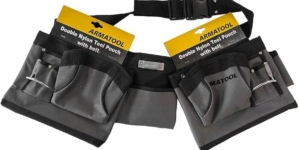-
BLACKOUT TECHNOLOGIES TARGETS TELEMATICS-INTEGRATED MOBILE DEVICE BLOCKING TO COMBAT SMARTPHONE DISTRACTION - 2 days ago
-
OpenADR Alliance announces first OpenADR 3.0 certified products with EVoke Systems, E.ON Energy and Universal Devices - March 25, 2025
-
Growing fulfilment and contract packer appoints new Managing Director - March 25, 2025
-
When is it time to invest in a WMS? Understanding the key trigger points - March 25, 2025
-
eCapital helps Vantage Recruitment on its journey to financial success - March 24, 2025
-
Hugo Beck Celebrates 70 Years of Packaging Innovation with Open House Events - March 20, 2025
-
PROLOG FULFILMENT SUPPORTS LUNA DAILY’S COMMITMENT TO BETTER BODY CARE FOR ALL WOMEN - March 19, 2025
-
Motion Ventures launches largest-ever maritime tech fund at $100M to meet the industry’s new pace of adoption - March 18, 2025
-
ITD GLOBAL APPOINTS GROUP CHIEF REVENUE OFFICER - March 17, 2025
-
SURECAM TEAMS UP WITH ENTERPRISE FLEX-E-RENT FOR VEHICLE REPAIR & MAINTENANCE CONFERENCE - March 14, 2025
Customer centric stock and delighting your customers.
CEO & Founder at Eurostop Limited
Retailers face a variety of challenges – not least successfully streamlining the customer journey across the many sales channels available and maintaining customer centric stock. Richard Loh, CEO of Eurostop, discusses how technology can help retailers to facilitate this journey and delight the customer, however they choose to buy.
Today’s retail market is a complex one, selling through multiple channels to customers who have more choices than ever, and arguably, no longer show strong brand loyalty. Price sensitive, they can shop online for the cheapest deal and have it delivered within hours of ordering. It is undeniably a customer centric world.
For the fashion retail market there are even greater challenges, for behind the customer expectation of immediate availability, there lies the very real possibility of disappointment in not having their choice available in stock.
The fashion and footwear business is a tricky beast to manage, with size, colour, material and fit, adding to the complexity. For the retailer, delighting the customer means that stock must right across all of these elements to achieve the sale. It means ensuring customer centric stock and that the right stock is available at any outlet where the customer chooses to buy – whether at a retailer’s franchise, pop-up, concession, own store or online.
The successful retailer will be the one that can consistently meet customer demand, quickly and efficiently – no mean feat.
Smoothing the customer journey
A customer may visit a store only to be disappointed by finding their size is not in stock. The winning retailer in this scenario will be the one that can check quickly on its systems if and where it has the correct stock to fulfil the order.
Of course, many retailers may invest in safety or buffer stock, particularly on best sellers, in an effort to avoid this customer disappointment. But this buffer stock comes at a price – not only does it take up valuable storage space, it relies on many different factors to ensure it is profitable.
The commercial threshold for keeping such stock often depends on timing – matching seasonal trends and confidence in the sales to ensure that new lines sell at optimum price, that there is no overstocking or need to discount at a possible loss.
Unsold safety stock that ends up being sent to an outlet to be discounted may prove to be a costly way to guarantee customer satisfaction.
Optimising stock across channels
Avoiding this situation relies upon having an accurate, single view of customer centric stock across the business. From the distribution centre, across all stores (including concessions and franchises), an accurate view of stock styles, sizes and colours, enables a retailer to deliver true customer satisfaction.
Many retailers claim that demand is mostly created in store with online used more for research, which means that failure to fulfil in store requests is missing a huge sales opportunity. Consider again the example of a customer entering a store to try on a particular item and then wanting to try a smaller size or different colour. The retailer with a connected, single view of customer centric stock can quickly check stock levels across the business. They may then offer the customer a home delivery, which may be fulfilled from another store or the warehouse. The only difference may be the way that the item is packaged.
Although for some business models it can be more profitable to fulfil from a distribution centre rather than a store, it may be that ‘delighting the customer’ comes at a higher, but necessary cost to secure the sale. Plus any increased sell-through can ensure that seasonal stock does not linger, freeing up space for new lines. It is, as they say, a ‘trade-off’ and one that a real-time view of stock can help to balance.
This connected view of stock also benefits staff. Providing them with the tools to do their job – a tablet or smartphone that enables them to check stock instantly on the shop floor without leaving the customer – dramatically increases the chance of a sale. They need no longer check stock in the back room, leaving the customer unattended.
Customer centric model, not stock centric
The tech-savvy retailer will already have invested in connected systems to provide a real-time single view of stock across the business. But it is important to ensure that this business model uses customer centric stock, and is not simply stock centric.
Intelligently using stock data to meet customer expectations
What this means is intelligently using stock data to meet customer expectations. Checking popular sizes and colours that are selling fast, at which location, and auto-replenishing will help to avoid the need to arrange special customer fulfilment requests. A real time view provides up to the minute sales information that can be acted upon quickly.
Tracking customer purchases and preferences is, of course, also a natural next step in ensuring customer loyalty and patronage. As important is tracking returns of items and the reasons. Analysis may show that certain pieces or lines have a poor fit, or the material quality is not as expected, all important feedback for the buyers and merchandisers.
Retail technology that makes a difference
Technology today offers many different options to manage stock. RFID has come a long way since the early days when it was introduced. It takes all the hard work out of inventory management and can track exactly what stock is in the store, dramatically reducing dependency on safety stock. This accuracy helps to ensure that stock is in the right place to deliver real customer satisfaction.
Other new technologies are emerging, such as video analytics, where observing how customers interact with products can help to identify how and why items are selling.
For example, merchandisers may have put a new clothing line in a key position in store which attracts customers on entry. If customers pick up the item, then the price is right, if they then take it to the fitting room, then the quality is also right. However, if there is no sale then this may be either due to poor fit or style.
The successful retailer will be the one that can track and identify barriers to sale and empower the sales person to assist the customer – either with finding another item, size or colour in stock.
Ultimately the key to this success will be managing stock and acting on the insights that real time sales data reports can give – but always by remaining customer centric.

































